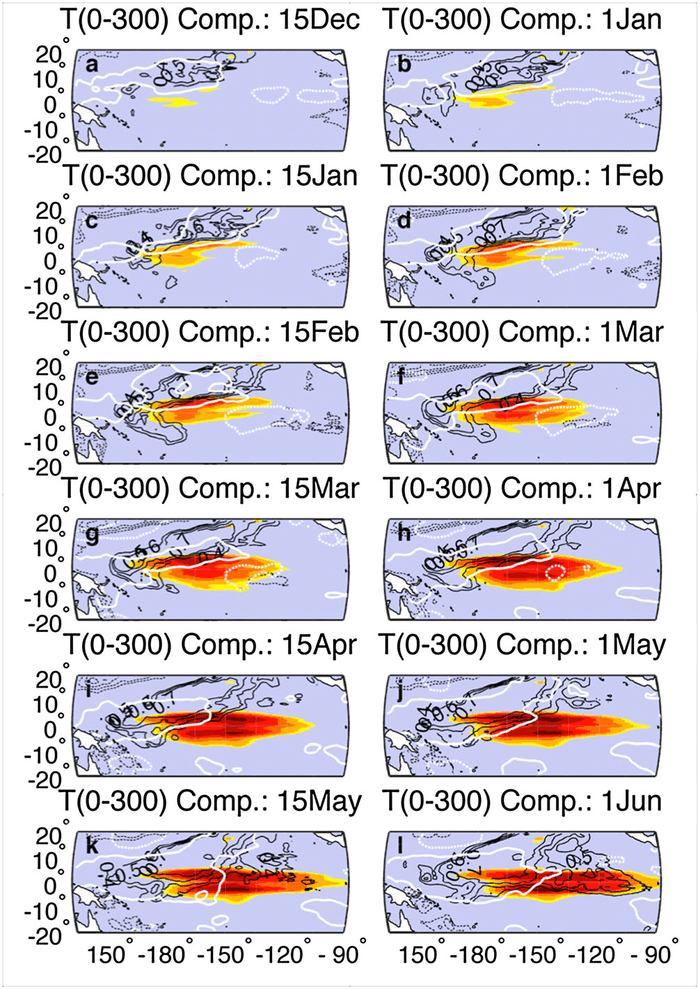by Bruce T. Anderson, Renellys C. Perez, and Alicia Karspeck
In a recent study by scientists at Boston University, PHOD, and NCAR, a new mechanism was uncovered for initiating ENSO events wherein SLP-generated North Pacific trade winds induce subsurface heat content changes that serve as precursors to El Ninos. This trade-wind charging mechanism of the equatorial Pacific is fundamentally different from any previously diagnosed, and studies examining the surface and subsurface ocean dynamics associated with this mechanism are underway.
Sea surface temperature variations over the equatorial Pacific associated with the El Nino/Southern Oscillation (ENSO) produce changes in climates across the globe. Here we report evidence from observationally constrained ocean data for the initiation of warm ENSO events (El Ninos) resulting from subsurface equatorial Pacific heat content increases related to tropical/extratropical sea level pressure (SLP) changes over the North Pacific. We hypothesize that the increase in heat content is a response to SLP-generated variations in the North Pacific trade winds, which we term trade wind charging of the equatorial Pacific. Experiments using a high-resolution numerical ocean model verify that the charging of subsurface heat content along the equatorial Pacific can be induced by SLP-generated trade wind variations. Furthermore, analysis of the numerical model results and historical observations indicates that the trade wind-induced ocean heat content increases are sufficiently large to initiate the onset of El Nino events, which mature approximately 12 months after the trade wind forcing itself.

Anderson, B.T., R.C. Perez, A. Karspeck, 2013. Triggering of El Nino Onset Through Trade-wind Induced Charging of the Equatorial Pacific. Geophysical Research Letters, 40(6):1212-1216, doi:10.1002/grl.50200.